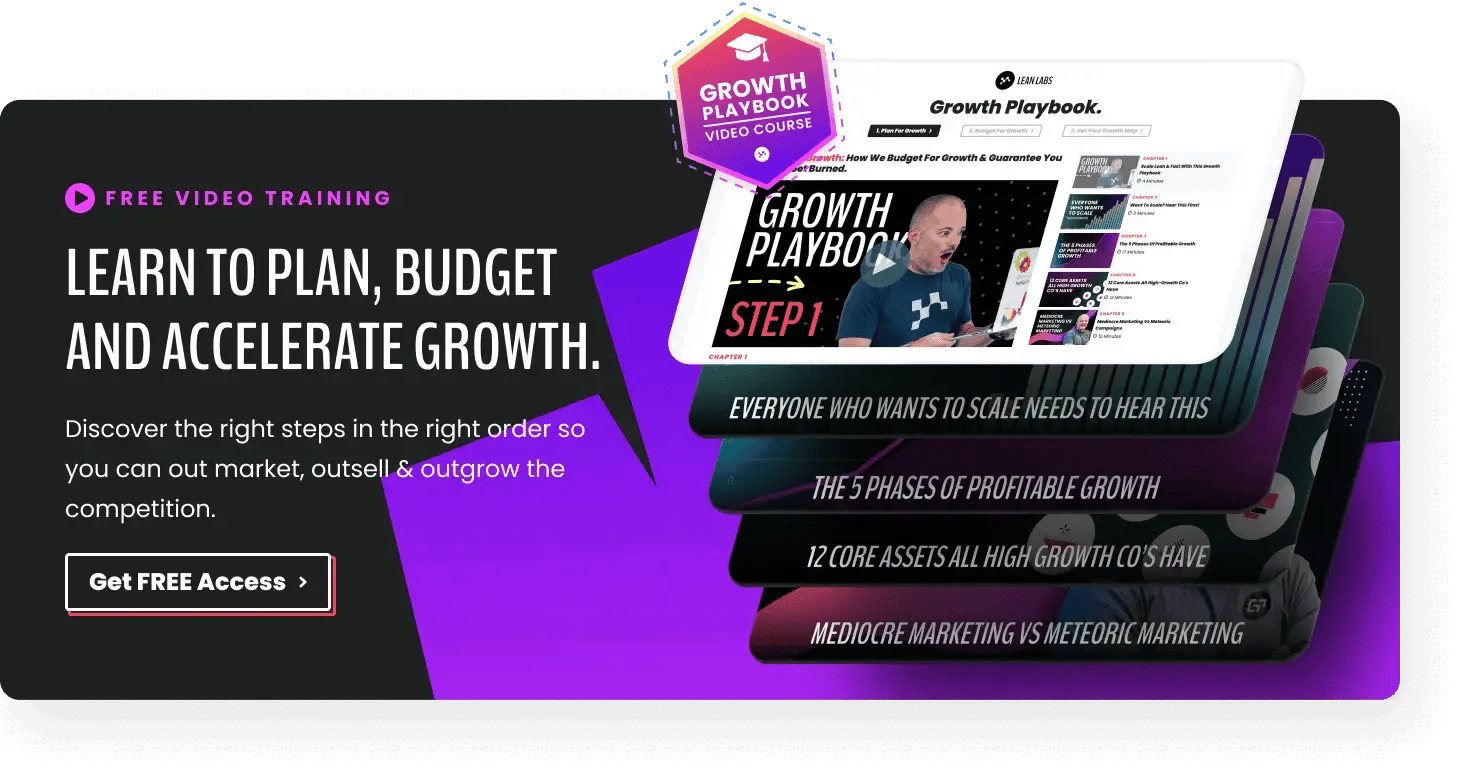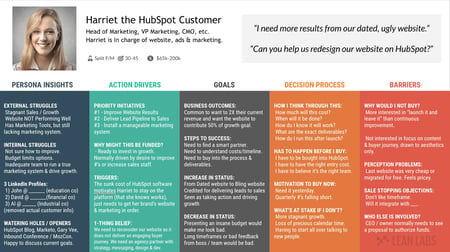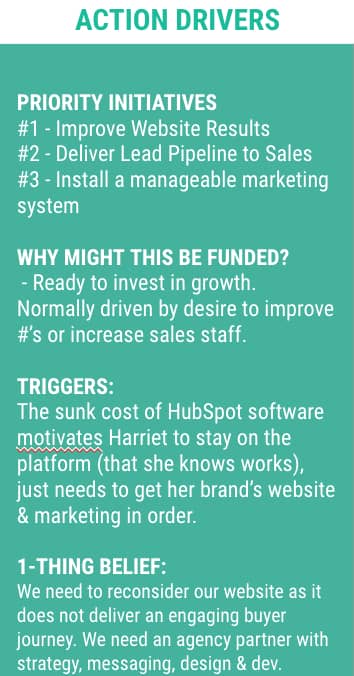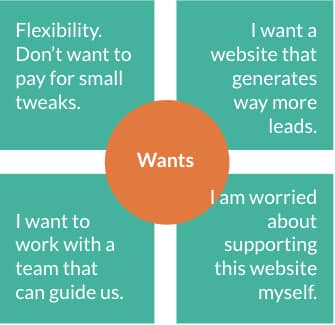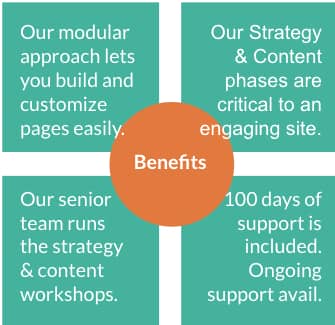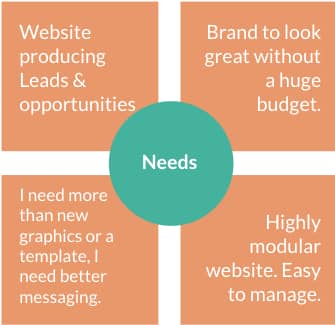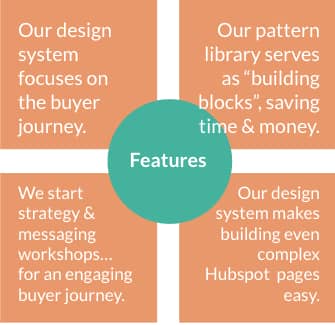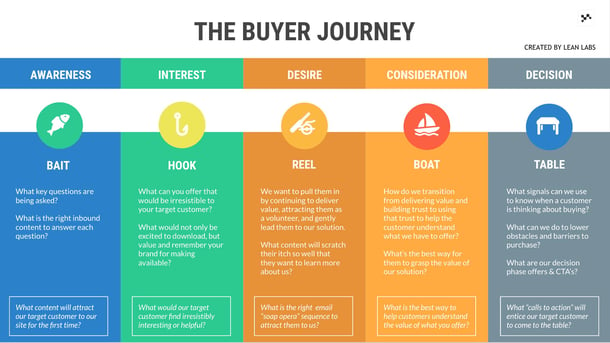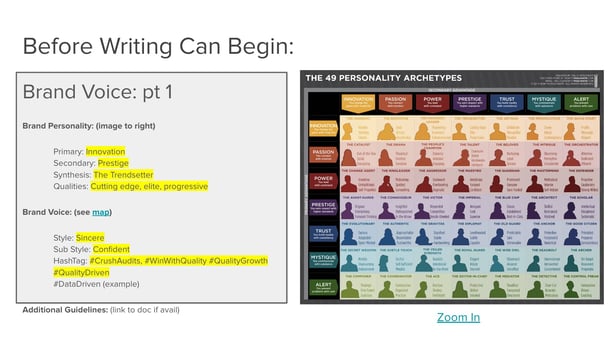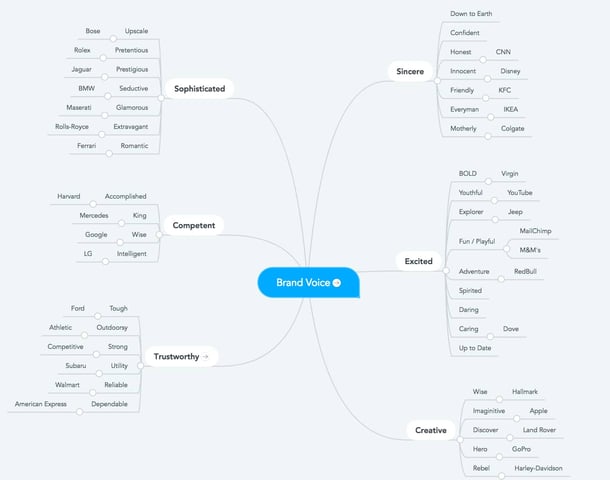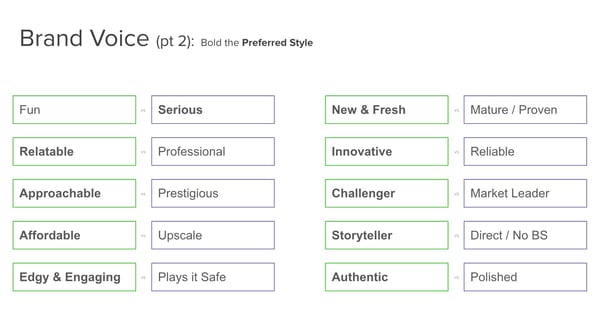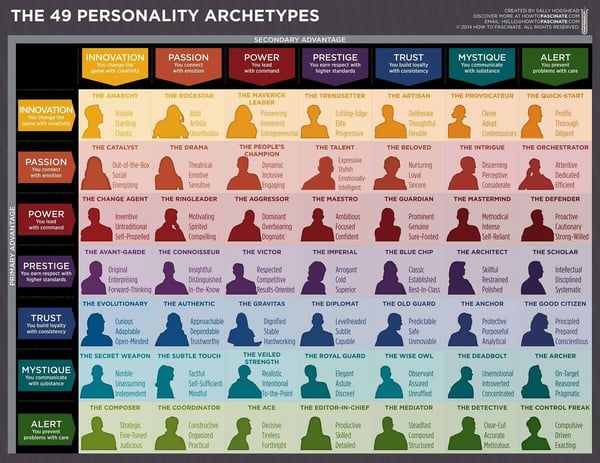It drives me crazy when I encounter a website I can't use. You know that site. It's the one that doesn't have any useful information on it, that makes it impossible to get in touch with a representative. No matter where you look, you can't locate pricing. It has a lot of outdated information.
My frustration is purely from a marketing perspective. I've been through enough site builds to understand that websites don't have to be overly complicated or as I've heard people say, "UX-y," to be effective. You don't need every bell and whistle to hold a visitor's attention. And you don't need endless paragraphs and rows of content to get your point across.
Because at the end of the day, customers don't care about you. They don't care about how pretty your website is. They want to know that whatever you're selling will work. They want to know what's in it for them. And with the right website content strategy, you can help them understand that.
All it takes are the answers to these eleven questions.
VIDEO INSIGHTS
Learn The 4 Pillars Of A Winning Website.
Watch the FREE video training to learn:
- The #1 marketing mistake most websites make
- Four pillars of a winning website
- A step-by-step process to apply these pillars to your site
Thanks for submitting the form!
We'll review the information you've submitted and respond to you just as soon as possible.
11 Questions Your Website Content Strategy Must Answer
I find that when companies don't listen to their customers, they fail. Their websites fail. Because they never built the site or created the content with their audience in mind. They were only focusing on themselves and what they thought the customer wants. And that never goes well.
That's why before writing any website content, you need to get into your customer's head. With more profound insights into what they want the most, you can create a website that starts delivering better leads, sooner.
Here are the top ten questions I think every website content strategy should answer.
#1: What are your customer's anxieties and fears?
To create website messaging that resonates with your customer, you need to speak to the right hesitations. Otherwise, you'll go off assumptions and risk investing a lot of time and energy into content that doesn't strike a chord. That's why it's critical to identify your customer's real anxieties and fears.
There are a few ways to make sure this information carries through to your website content strategy. I use a strategy document, "The Value Proposition Map," to document customer fears, feelings, wants and more. Then, I take each fear and find a specific way that my product or service assuages it.
That's why this map is a critical component of any website content strategy.
I start with at least four fears and anxieties. Here is an example of the customer concerns I wrote down for SprocketRocket, a tool we built to conduct rapid prototyping with HubSpot pages. Unsurprisingly, our customer's fears have to do with cost and resources.
Visually, this is what it looks like in the map:
I can then use those to brainstorm answers and solutions. Here the responses we came up with:
For ease of reading, here are the initial fears and the matching response.
- Why is this so cheap? We hold strategy and content sessions in guided workshops, instead of us doing all of it for you.
- Why is this so expensive (when comparing it to a template?) This is not a template. We include extensive one-on-one design time.
- I don't know if I can keep up with this schedule. If you fall behind, you can join the next cohort at no additional cost.
- Will I be stuck on HubSpot if I build a site on Sprocket Rocket? Yes. If you move to another platform, you will need to migrate.
I can use those responses to inform my pricing and about us pages, as well as for critical conversion pages. By defining these fears, you can write better website messaging, create guarantees, inform content and more.
#2: What are their top three initiatives?
You don't always know what your customer's priorities are. And when you make assumptions, you invest in content and copy that does not align with what they're looking to do. It throws off your entire buyer journey. That's why we always do research and often, get our customers on the phone.
There are a few research and analysis tactics I find to be the most valuable.
Customer Polls
You can easily poll your existing customers through phone calls, snail mail or email. And while some customers are more than happy to fill out a poll and return it, it may also be a good idea to add an incentive. People are busy. I've taken time out of my day to complete polls in exchange for Starbucks Gift Cards or discounts.
When you're asking for valuable insight, there's no shame in offering a thank you in exchange for your customer's time.
Focus Group
When you think about focus groups, scenes for Mad Men might flash through your mind. However, focus groups can be an incredibly effective way to connect with your customers face-to-face. You get so much more in person than you do over the phone. You can offer lunch or an incentive, invite them to your office, and ask a series of questions about their priorities for the next year.
Additionally, you can get even more value from this exercise if you involve a sales team member or someone from your development team. Your entire team can gain insights.
Mine Forums
Not everyone has time to dig through Reddit and Quora to get information about your customers. However, these are some of the best places to find candid conversations about your industry. There are a few ways to approach this type of research in a cost-effective, rewarding kind of way.
First, you can hire someone that already participates in these conversations. If you can find someone that's willing to do the research that matches the characteristics of one of your personas, you can get behind-the-scenes, in-depth insights about what your customers want and expect. Think of it as hiring an inside man.
Otherwise, UpWork is brimming with college students and young professionals looking for side gigs. You can pay someone to sort through subreddits, Facebook Groups and Quora Q&As for information about what your target audience is trying to accomplish in the next year.
Google
Before you roll your eyes, I'm not talking about Google Search. I'm referring to Google's free resources, such as their customer barometer and Google Trends. There are high-level takeaways from these research platforms, but there are likely a few valuable takeaways that can guide the direction of your research.
I'd recommend taking this information with a grain of salt and using it alongside one of my other research tactics.
Send Out A Survey
The survey approach is one of my favorite tactics for research. You can easily mimic the survey that HubSpot sends out every year. With The State of Inbound, the HubSpot team reaches out to over 6,000 people and asks them a ton of questions about how they're using inbound marketing, their objectives, challenges, frustrations, etc.
It also has a considerable pay-off outside of research alone. Once HubSpot collects the data and sorts through it, they publish a one-of-a-kind report with the findings. They send the report back to everyone they surveyed and promote it throughout the next year. They generate a ton of backlinks and build up buzz the for the next one.
You can create your survey with Typeform and ask every question you need to. You can also select from one of HubSpot's many integrations (like SurveyMonkey) and pull all of that valuable customer data back into your CRM.
Pay For Market Research
I'm not an expert for researching every industry. I understand that sometimes, you need the research as soon as possible and it may require a deeper dive than scanning Reddit. That's why market research companies like Trend Hunter or First Insights exist. It can be expensive, but you will have a ton of data.
Overall, you want to talk to actual people and hear what their goals and objectives are. After you have that information, you can record it and flesh it out using a strategy document.
I use a Jobs To Be Done template. Because once you collect the initiatives that your customer has, you'll see that they aren't necessarily tangible. In addition to helping them accomplish the task, your product or service can also impact how they feel and how important people perceive them.
The other priorities your customer may have may be:
- Feeling more organized or on top of things (Emotional Job)
- Gaining a level of status at work, at home, or in their social circle (Social Job)
- Getting the job done or fulfilling the task at hand (Physical Job)
We break these initiatives down even further. If you can document specific situations that your customer is encountering, you can flesh out the value of each job.
In the snapshot above, you can see how the situation (having a lot of QA tasks) inspires motivation and an outcome. The emotional job is to make the customer feel in control, while the social job shows others that they're doing great work.
#3: How does your product serve those initiatives?
Whether you're trying to lose weight or keep a tidier home, you always know when you're not quite nailing it. It's the same when you're not generating the kind of revenue or attention you need in business. Despite all of your hard work, your customers aren't excited. You're not getting any buzz in the press and sales aren't skyrocketing.
When this happens, it's likely because you did not identify how your product was going to serve the initiatives I described above. That's why you must include this in your website content strategy. Before you write any content, you need to figure out how your product is going to serve your customer better than anyone else.
I use another strategy template to document the answer to this question. It's The Customer-Centric Business Model Canvas, a play on the Lean Canvas by Ash Maurya. In my opinion, it's one of the best tools to uncover why or why not your ideal customer will buy from you.
All of the sections are important, but here are the ones that will tell you whether or not your product can resolve their challenges.
Core Customer Problems
You want to document the problems that will cause a customer to hire you. You also need to understand why they have not solved this problem yet. What's standing in their way? Typically, it can be due to time and money, but do not forget to consider any personal issues or challenges as well.
Existing Alternatives
There is more than one way to solve a problem. Don't forget that or underestimate it. Your customer has options and may choose a competitor if you don't check off all of their boxes. That's why you need to identify the reasons they would accept a competitor over you as well.
Additionally, if your customer isn't ready to hire you, they may be implementing an alternative solution. For instance, if you have a hiring company that focuses on placing highly-qualified candidates in full-time roles, a company could still be using UpWork or contractors because they're not fully committed to making a change. There are concerns about hiring a recruiter, and it's your job to figure out what those hesitations are.
Gaps In The Market
You need to understand how other solutions fall short. It can be critical to identifying your shortcomings. Because if your product can't or won't fill those gaps, someone could come along and do it for you. It's a tired example but consider Uber. They quickly disrupted the taxi industry because they were willing to make hiring a ride an enjoyable process.
You need to consider that having these gaps may lose customers.
Ideal Customer
Sometimes, your solution isn't the right choice. That's fine. You can't cater to everyone and you shouldn't. But to make sure that you're marketing to the right customer, you need to know who they are. What attributes make someone a great fit? What is their desire or goal?
If you can identify who that individual is, you can determine whether or not your solution fulfills their needs.
#4: What are makeshift solutions that delay a purchase?
Another section of The Customer-Centric Business Model Canvas covers the temporary solutions your audience uses. I love this question because so many customers put off making essential purchases by putting a band-aid on their problem.
But you can't scotch-tape a solution together forever. Once you understand all of the temporary solutions a customer has in place, you can create messaging that debunks those solutions. You can tap into the frustrations that surround that quick fix.
When my air-conditioner broke this summer, I did everything I could to prevent that $6,000 purchase. I paid $400 for coolant. I bought a window unit. I kept fans running 24/7. At any point, a local A/C provider could have gotten me to make that purchase sooner by pointing out how ineffective those solutions were.
Ultimately, it got too hot, and I bought a unit anyway.
#5: What are your customer's specific preferences, as it pertains to your solution?
Your website content strategy needs to consider the preferences of your audience. These preferences can range from how they want you to communicate with them (email, phone calls, etc.) to how they make their decision to buy. And you can cover a lot of your customer's specific preferences using a Buyer Persona template or the Value Proposition Map.
The Buyer Persona template covers a lot, but specific areas that can help you understand customer preferences include their action drivers, decision process, and barriers.
The action driver section includes a section regarding their one-thing belief. The one thing is what a customer believes that will make them buy from you. For example, with Sprocket Rocket, the one thing our customer thinks is that their website should follow the buyer journey and that their agency partner must have the capacity to cover strategy, messaging, design, and development.
That already tells us so much about the kind of partner our customer seeks.
Now, the Value Proposition map covers fears and answers (like I covered about) but also documents customer wants and needs. After we record those, we map their wants to our benefits and the needs to our features.
Customer Wants and Our Benefits
Our customer wants to include flexibility and a hands-on team. We can use those insights to elevate various benefits of our solution.
These benefits include Sprocket Rocket's modular approach, as well as the senior team that runs our strategy and content workshops.
Customer Needs and Our Features
Our customer needs include a website that's easy to manage and better messaging.
Again, we provide that with a design system that makes building HubSpot pages easy. Our workshops remedy the better messaging need with start-to-finish buyer journey workshops.
As you can tell, breaking down these specific, yet critical aspects of our customer's expectations provide a lot of opportunities for more impactful messaging on our website.
#6: HOW CAN YOU IMPROVE YOUR CUSTOMER'S status?
I don't think there's a human being on earth that doesn't want a boost in status. Young dancers and singers aspire to be Beyonce, and up-and-coming entrepreneurs worship Elon Musk. Even in marketing, we have our idols. I know that Ryan, the head of our inbound team, loves Seth Godin. As a writer and traveler, I would love to gain the status as influencers like Elizabeth Gilbert or Anthony Bourdain.
Your customer has these aspirations as well. If the messaging on your website can speak to those desires, you can create highly effective material that makes them feel like they can achieve their dreams. If I came across a product that made me feel like backpacking through Vietnam for under $200 was possible, I'd jump at it. You get the idea. You need to find your customer's heroes, goals and dreams.
You can return to the Jobs To Be Done template for this. Let's use the Anthony Bourdain example here. He's my idol, so if I was looking to buy travel insurance (for example) an insurance provider could identify my jobs to be done as:
- Emotional Job: I want to feel secure and protected on my trip abroad.
- Social Job: I want others to see that I have experience in travel and know how to plan an adventure.
- Physical Job: I need to purchase cost-effective travel insurance.
This particular question can lead to website content and messaging that pushes past my hesitations and gets me on board with insurance.
#7: What offer IS too good to pass up?
The answer to this question is critical because there's too much mediocre content and offers out there. Every industry has lackluster trials, eBooks, white papers and worksheets that are filler. They don't help the customer accomplish anything, so they fizzle out and fall flat.
That's why you need to identify the types of offers that will blow your customer's mind. You can cover this on your buyer journey, which looks like this:
The specific question to answer here is "what would our target customer find irresistibly interesting or helpful?"
If this question stumps you, you can generate some ideas by:
Studying competitor offers.
If your competitor offers an eBook with 10 Great Project Management Tips To Increase Productivity, consider an eBook that offers 50 Incredible Project Management Tips From Industry Experts.
Look at other industries.
Even if the offer covers a different subject matter, you can gain a lot of inspiration for the format alone. For instance, a manufacturing company could create an industry-specific podcast that covers the meaning and identity we find in work.
Go old-school.
If your industry already has a ton of eBooks, don't make an eBook. The same goes for podcasts, webinars, etc. Unless you can make it exceptional, don't follow a medium merely because that's what your competitors are doing. Think outside the box.
You can experiment with other tactics, such as printed coupons, brochures, and high-quality catalogs if it can give you an edge. Again, quality matters.
Overall, you want something that your lead will download or sign-up for without hesitation. Providing something exceptional will not only gain your customer's trust, but they will refer you to co-workers and peers.
#8: What are your customer's deal breakers?
Every customer has their deal breaker. For some, it's price. For others, it's a time commitment. In your website content strategy, you need to identify what those hurdles are so you can speak to them throughout your content and pages. My favorite tactic for finding those deal breakers is scouring reviews.
If you're a SaaS or a B2B, go to a review site like Capterra or TrustRadius and locate your competitors. From there, look through reviews from existing customers. You can find all kinds of takeaways about what they found challenging about using the software, or features they wish it had.
For example, let's say that one of your competitors is Toggl (a time-tracking tool.)
A few negative attributes that customers shared on TrustRadius about Toggl include:
If there were additional reviews about automatic categorization, you could theorize that it's a must-have for customers. That feedback can be passed to your product team, or included in your website content strategy if you already have that feature.
A lot of these profiles are public, so you could even reach out to reviewers and request an interview where you ask more pointed questions regarding deal breakers.
#9: What prevents your customer from solving this problem?
You want to include the answer to this question in your strategy for a few reasons. First, these insights can be essential for providing resources and support that guide the customer forward. Additionally, understanding what prevents your customer from solving a challenge will help you gain empathy for them.
That empathy is essential to understand. For instance, if a majority of your audience struggles with affording a solution, it can impact how you present your pricing. If the product or service is seasonal, you can modify your website and content strategy to align with that. It's all about understanding any hesitation your customer has to make a purchase.
#10: What would they tell you they want help with? Try to use their words.
"Try to use their words," is the key phrase here. For this part, you want to either talk to your customer personally, read reviews, study competitor content or visit forums. Customers will explain and define their challenges differently. They may use different language or phrasing. They will search for unfamiliar or unknown terms.
If you can't summarize their problems in their voice, you can make a mistake and:
Go after the wrong search terms.
Even if you're a little off about how your customer phrases their problems, you could build content and pages for keywords that don't apply to them. Because of this, you could attract the wrong customers or fail to appeal to any customers at all.
Lose their trust.
I can't tell you how many articles and website pages I've read that I know the company did not have a website content writer develop in-house. Either that or the writer wasn't familiar enough with the industry. When that happens, you immediately lose trust with your customer because they assume you don't know your stuff.
Provide ineffective resources.
When you understand how your customer describes their challenges, you can provide an array of content that speaks right to their frustrations. But if you can't, you will generate a lot of costly website content and lead magnets that won't hook your customer.
Additionally, when you understand the language your customer uses, you can also choose the right tone for your content. For instance, if your customer tends to be a little more serious, your website content will be more formal and professional.
You can take those insights and use a brand voice exercise to determine the right fit for your audience. Once I had a good idea about how an audience communicates, I use two different brand voice worksheets to help narrow down the tone I want to use.
The most important part of this exercise is the 49 Personality Archetypes. I can select a primary and a secondary archetype to help narrow down my overall brand personality.
By including this in my website content strategy, I can ensure that we're always using the same language to communicate in a voice our customer prefers.
#11: Why now?
Once you figure out the trigger events that lead to your customer adapting a solution now, you've got the keys to the kingdom. You can create messaging that taps into their pain points and push them forward at critical conversion points on your website. What is the risk of the customer waiting a few weeks? A few months? What about a year?
You want to craft a narrative that shines a light on the risks of waiting. That's how you create urgency and get the lead to become a customer. And if the customer doesn't need to solve the problem in the immediate future, what would need to happen to make it so? Could you offer a discount? A limited-time sale?
Your Website Content Strategy, In One Place
Creating a website content strategy is no easy feat. It requires a ton of research about your customer. However, if you can get your website content (mostly) right the first time, you can generate better results from your site sooner. You don't have to go back and make changes because you didn't listen the first time.
It's a daunting task, but with the right resources, you can get started now. We include all of the templates I used in this article (Buyer Personas, Jobs To Be Done, Brand Voice, etc.) in our free Sprocket Rocket Strategy Kit. You can store all of your insights and have everything you need to create a one-of-a-kind website content strategy.

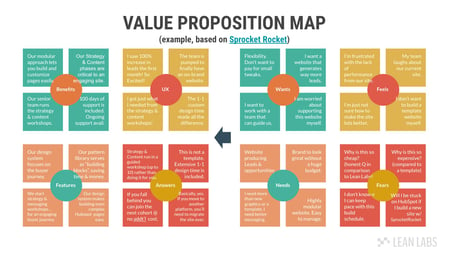
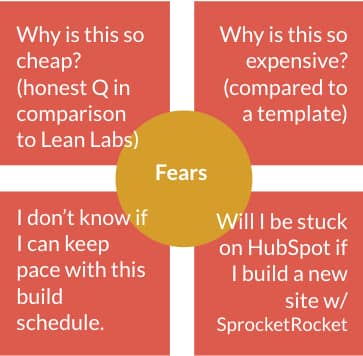
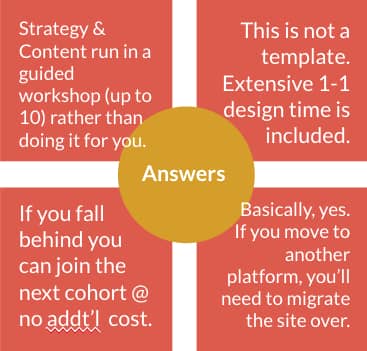
.jpg?width=800&name=jobstobedone%20(2).jpg)

.jpg?width=450&name=canvas%20(1).jpg)
